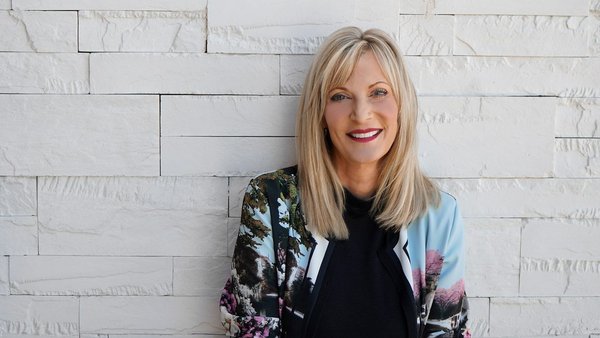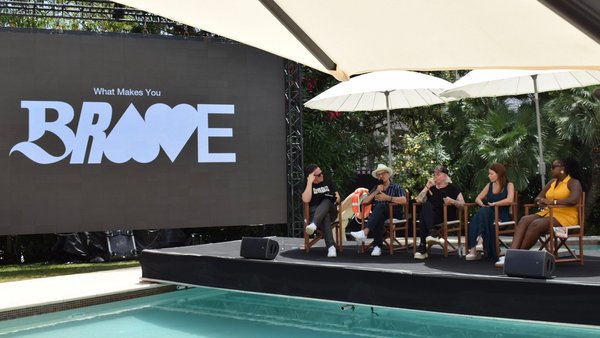Promoted content
Flexibility, consistency, and universal human truths: how to generate mass appeal without diluting your brand /
How do global brands successfully execute cross-market campaigns that resonate at local level?

Verizon Media, home of Amplify 360, hosted a roundtable at Most Contagious APAC to discuss how brands can create conversations and harness creativity in an uncontrollable online universe. Moderated by Contagious co-founder Paul Kemp-Robertson, and head of creative media at Amplify 360 by Verizon Media, Yangze Wang, the session focused on the challenges of delivering mass appeal and relevance in a cross-market campaign without losing sight of your brand.
‘Sometimes it’s about holistic thinking rather than objectives,’ said Ellena Hung, global head of category marketing, streamers & creators, at Logitech. With global campaigns, focus on ideation and translating the details rather than just the language. ‘Once you’re aligned you can be on autopilot,’ she explained. That initial communication at global level is the most important but most difficult aspect to manage.
Ellena Hung, Logitech
At Colgate-Palmolive, ‘everybody has KPIs on which they’re aligned and then there’s localised aspects,’ agreed Bea Atienza, the company’s impactful brand experience leader. That approach requires trust between the teams, she explained, as well as an ability to create ‘adaptable strategies where a level of customisation is allowed to make global strategies relevant for local cultures and communities.’
It’s very simple, agreed Hung, ‘We need to take a step back and talk openly about how the campaign will serve the business’ objectives at a local level as well as align with the global goal.’ Rather than impose the global strategy, she advised, ‘be aligned on the definition of success.’ To drive a wider impact globally and drive the brand equity at a global level, there needs to be some consistency at a global level. ‘Let’s create a manifesto and see how we can make it relevant to consumers at a local level,’ said Hung.
Graham Drew, Grey
It’s a headache of a brief, and Graham Drew, CCO of Grey and former creative lead on SK-II, is familiar with the challenge. ‘We’re now in this era where people are looking for that magical global platform that is defined enough for consistency as a global brand but flexible enough for localisation,’ he said. ‘But when the central thought isn’t rich enough, you end up with bland, uninteresting work based on an obvious human insight.’ One way to avoid this is to have different people add their own interpretations of that central insight. Burger King does this successfully with its ‘ever briefs’ where different markets can add their own touches and interpretations. Snickers too, with its simple and universally-applicable positioning around hunger.
‘Those are the holy grail,’ said Drew. ‘You want this human truth about the brand – but is it broad enough? And is it rich enough for people to interpret in different markets?’ In fact, ‘often ideas are “too right” – the insight needs to have an element of the unexpected to allow you to go to unexpected places.’ Many of the big FMCG brands go down the ‘obvious route’, said Drew.
If your brand idea is not strong enough it gets quickly watered down, agreed Atienza. Although Palmolive-Colgate has a lot of equity work globally coming out, ‘that doesn’t stop us having to sell and announce new things, so it’s about finding moments to communicate the brand with thoughtful pieces, as well as keeping product comms interesting.’
Graham Drew, Grey
In the case of SK-II’s Marriage Market Takeover campaign, created by Forsman & Bodenfors, the focus was on the value of Chinese singles and the pressure put on them to marry, rather than product. The topic resonated differently with different markets: for instance in the US, there may not be a ‘marriage market’, per se, but people still feel a degree of pressure to settle down. ‘Everyone was aligned on the same page,’ said Wang, and the same piece of content was orchestrated in myriad ways.
‘The conversation value of the SKII campaign was huge,’ said Drew. ‘Within the universal truth was something the brand wanted to champion and something the target market could absolutely resonate with. As someone who started out in PR, Drew learned a valuable lesson: ‘If no one wants to write or speak about what you’re doing, it’s not worth doing. So it’s a useful process to step back and ask yourself: “Would I talk about this? Would my friends talk about this?”’
Bea Atienza, Colgate-Palmolive
Key Opinion Leaders (KOLs) and content creators play a big role in driving the conversations. But Wanzi Zhang, a KOL who has 3.3m followers on TikTok and has collaborated with the likes of La Mer and Lancôme, believes that a lot of brands don’t give enough creative freedom to KOLs, and that many brands that target the Chinese market don’t do their research. ‘You have to understand your target audience and KOL first, before you deliver a message,’ she said. ‘I also think that brands need to know a KOL’s demographic before working with them.’ The more relevant your KOL is to your vertical, she said, the more likely it is you’ll reach your audience.
To wrap up the session, the panelists went back to basics. ‘Make sure the core of the brand is still there once we take the brand to new places,’ advised Atienza. ‘Have the courage to find tensions that your brand has the right to explore. That’s the dream.’ Simplicity is best when identifying that ‘universal truth’, added Hung. ‘It’s important to take a step back and think “what is my main objective?” and really discuss it with the market.’
Want more of the same? /
We don’t just write about best-in-class campaigns, interviews and trends. Our Members also receive access to briefings, online training, webinars, live events and much more.




